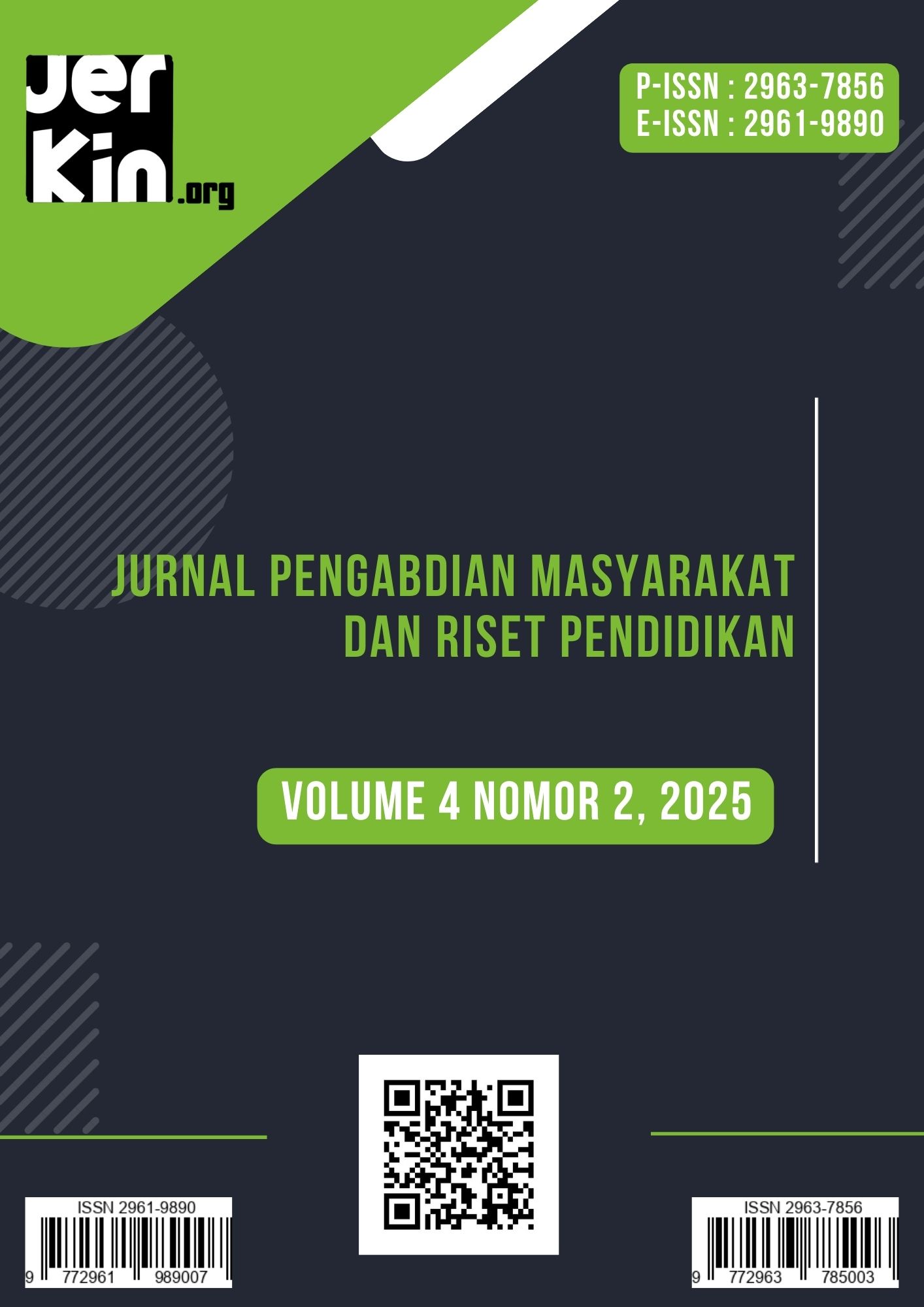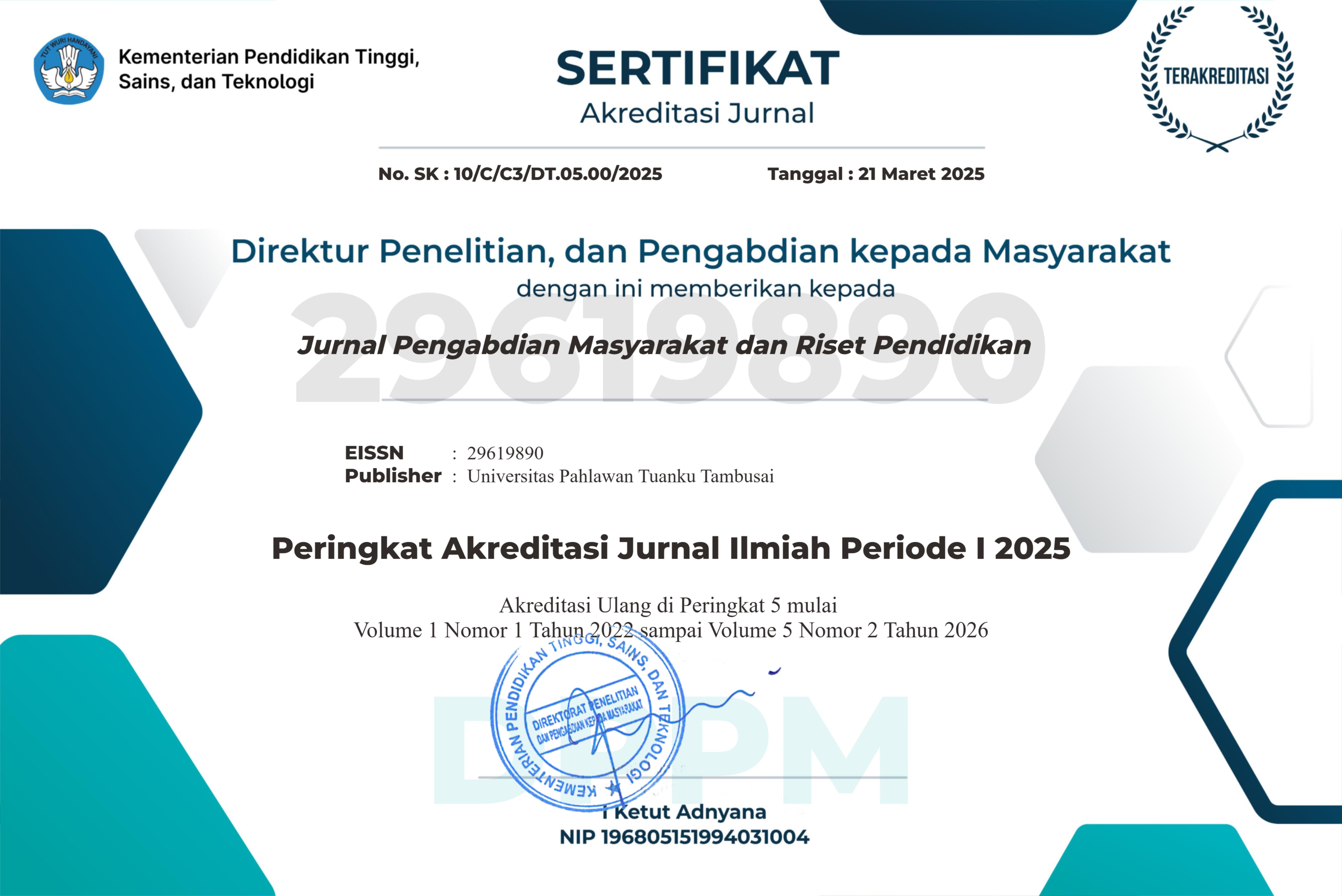Pengelolaan Sumber Daya Alam dalam Perspektif Pembangunan Ekonomi Berkelanjutan
Penelitian
DOI:
https://doi.org/10.31004/jerkin.v4i2.3132Keywords:
Natural Resources, Sustainable Development, Green Economy, Circular Economy, Environmental ManagementAbstract
This study aims to analyze the concept and practice of natural resource management (NRM) within the framework of sustainable economic development in Indonesia. Natural resources are vital for supporting economic activities and improving social welfare. However, excessive and unplanned exploitation has caused environmental degradation, social inequality, and a decline in ecosystem capacity. This research employs a descriptive qualitative method using a library research approach, focusing on conceptual and empirical analyses derived from literature, regulations, and reports from national and international institutions. The findings reveal that uncontrolled exploitation of natural resources provides short-term economic benefits but leads to significant social and environmental costs in the long run. Conversely, applying green economy principles, circular economy models, renewable energy adoption, and community participation can enhance resource efficiency and generate sustainable economic value. In the context of national development, integrating economic, social, and environmental policies is essential to achieve a balance between growth and sustainability. Strengthening environmental regulations, promoting eco-friendly technologies, and implementing the 3R principles (reduce, reuse, recycle) are crucial efforts to realize inclusive and environmentally responsible development for future generations.
References
Badan Pusat Statistik. (2023). Laporan statistik sumber daya alam dan lingkungan Indonesia 2023. Jakarta: BPS.
Emil Salim. (1986). Pembangunan berwawasan lingkungan. Jakarta: LP3ES.
Kementerian Energi dan Sumber Daya Mineral. (2023). Statistik energi Indonesia tahun 2023. Jakarta: Kementerian ESDM.
Kementerian Lingkungan Hidup dan Kehutanan. (2023). Laporan status lingkungan hidup Indonesia 2023. Jakarta: KLHK.
Miles, M. B., & Huberman, A. M. (1994). Qualitative data analysis: An expanded sourcebook (2nd ed.). Thousand Oaks, CA: Sage Publications.
Pearce, D. W., & Turner, R. K. (1990). Economics of natural resources and the environment. London: Harvester Wheatsheaf.
Prasetyo, D., & Nugroho, A. (2022). Penerapan prinsip ekonomi sirkular dalam pengelolaan sumber daya alam. Jurnal Pembangunan Hijau, 4(2), 115–130.
Susilo, B. (2021). Analisis pengelolaan sumber daya alam berkelanjutan di Indonesia. Jurnal Ekonomi Lingkungan dan Pembangunan, 3(1), 45–56.
Todaro, M. P., & Smith, S. C. (2012). Economic development (11th ed.). Boston, MA: Addison-Wesley.
Undang-Undang Republik Indonesia Nomor 32 Tahun 2009 tentang Perlindungan dan Pengelolaan Lingkungan Hidup. Lembaran Negara Republik Indonesia Tahun 2009 Nomor 140.
United Nations Development Programme. (2022). Uncertain times, unsettled lives: Shaping our future in a transforming world (Human development report 2022). New York, NY: UNDP.
World Bank. (2023). World development indicators 2023: Green growth and sustainability. Washington, DC: The World Bank.
Zed, M. (2014). Metode penelitian kepustakaan. Jakarta: Yayasan Obor Indonesia.
Downloads
Published
How to Cite
Issue
Section
License
Copyright (c) 2025 Titian Dhea Fresensia Purba, Bona Raja Purba, Sri Rosni Alfiat Laia, Flowremsari Haggata Ginting, Kevin Daniel Sirait

This work is licensed under a Creative Commons Attribution-ShareAlike 4.0 International License.















